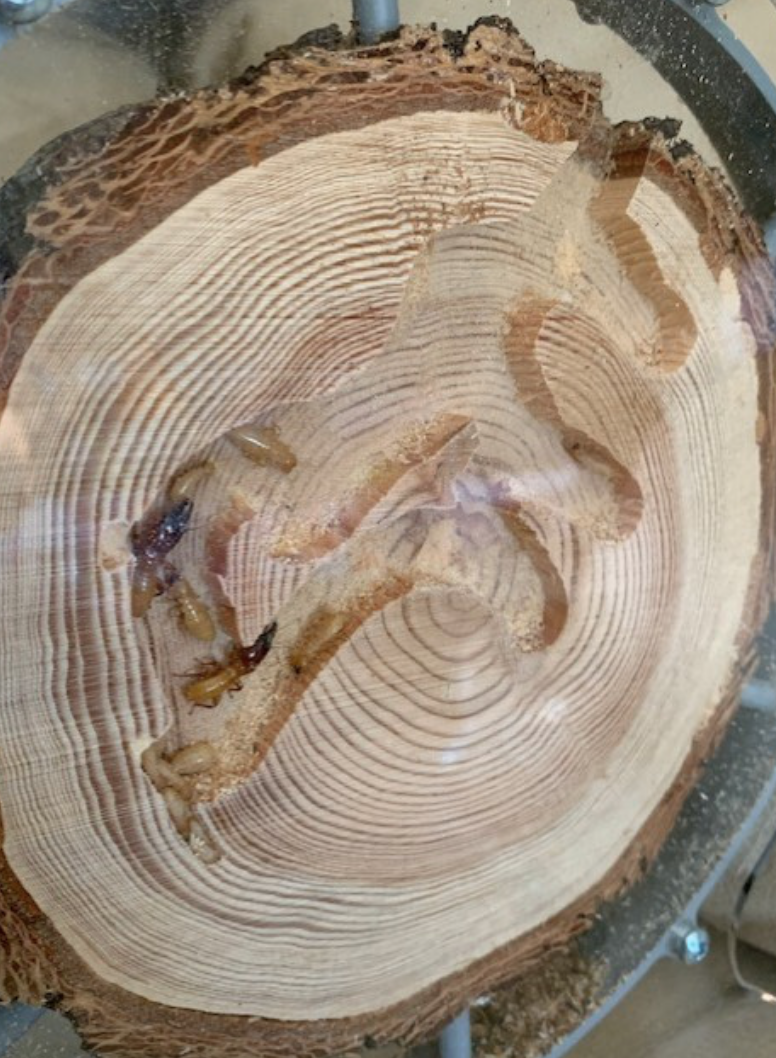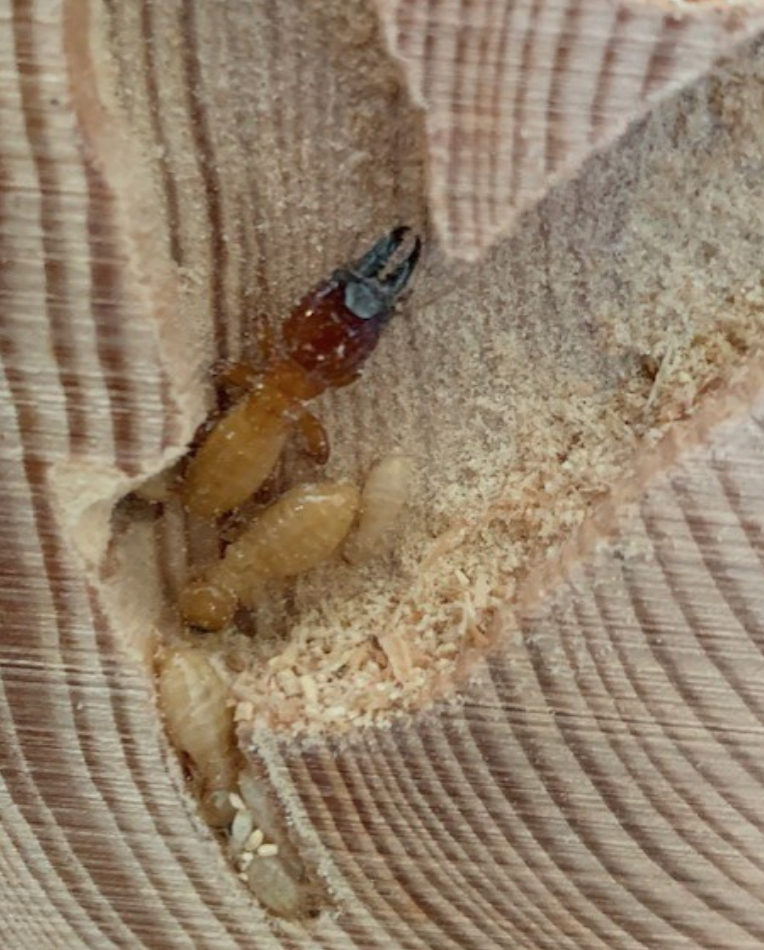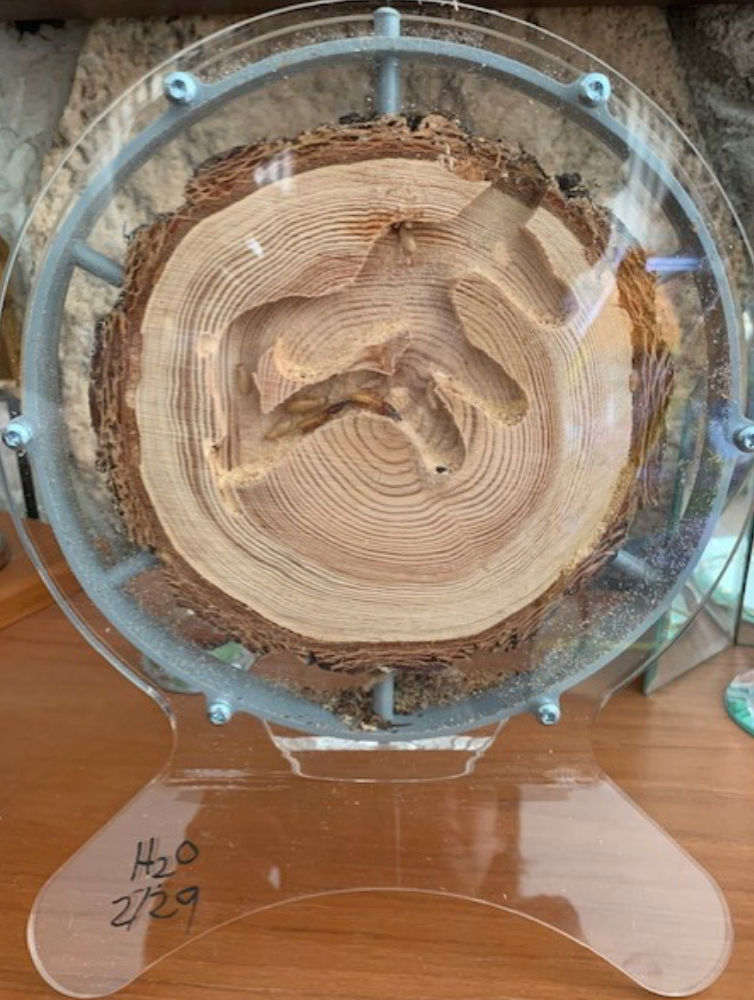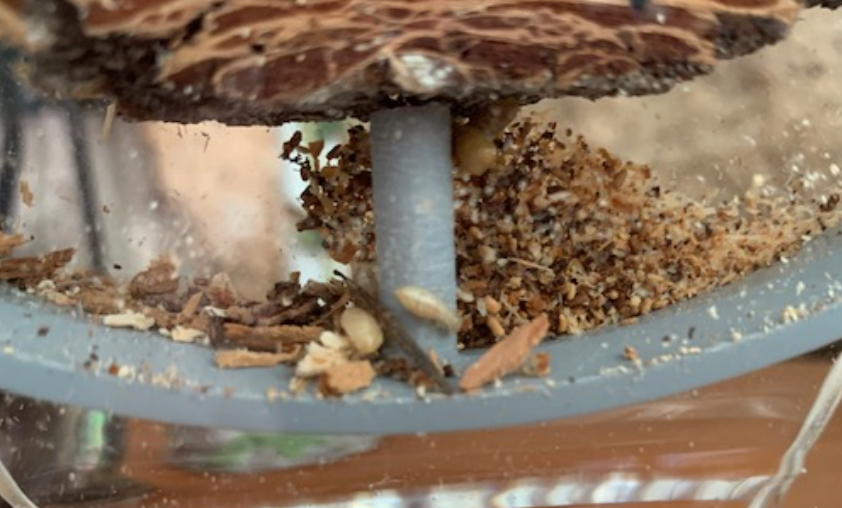I spent a little time observing the termites yesterday, too, knowing I wouldn't have a chance for the rest of the week.
The two soldiers are still hanging out, not yet eaten.
I also watered the Termitat again - I think I overwatered it - but I just want to make sure it's okay for the week at school.
It's really cute how the termites tap their bodies against the wood in an alarm communication. It's kind of similar to how my C. fragilis gaster-tap when alarmed.
Termites keep tapping for a while, and it's just a couple of the nymphs. The soldiers, when alarmed, kind of bite at anything near them, which of course is only nymphs. I got a bit worried because one soldier pinched a nymph a bit hard - it was a bit like the video of worker ants biting a larva that gave off princess pheremones (see my post in the ant section). Hopefully the nymphs are okay.
I also found a very very tiny nymph. It almost looked like a big white springtail, it was so small. Very cute. It still amazes me how independent the nymphs are.
Oh, also I discovered the termites had begun blocking off the entrance/exit from the interior of the wood to the exterior (the bark layer) with white lumpy stuff. They did, however, leave two holes through which the nymphs can fit when they are alarmed and want to check things out. It's cute how the little kids go out and go circumnavigating the slice of wood to make sure things are okay despite sudden water influx or scary earthquakes (me moving their Termitat around).
Edited by OhNoNotAgain, March 9 2020 - 8:53 AM.
Formiculture Journals::
Veromessor pergandei, andrei; Novomessor cockerelli
Camponotus fragilis; also separate journal: Camponotus sansabeanus (inactive), vicinus, laevigatus/quercicola
Liometopum occidentale; Prenolepis imparis; Myrmecocystus mexicanus (inactive)
Pogonomyrmex subnitidus and californicus (inactive)
Tetramorium sp.
Termites: Zootermopsis angusticollis
Isopods: A. gestroi, granulatum, kluugi, maculatum, vulgare; C. murina; P. hoffmannseggi, P. haasi, P. ornatus; V. parvus
Spoods: Phidippus sp.

























